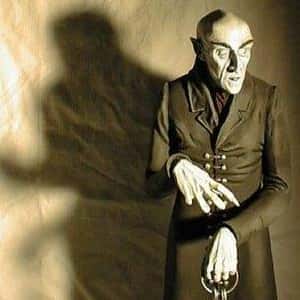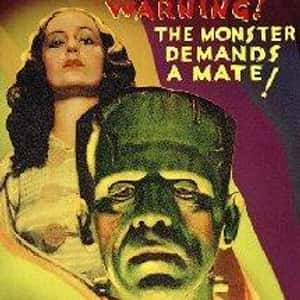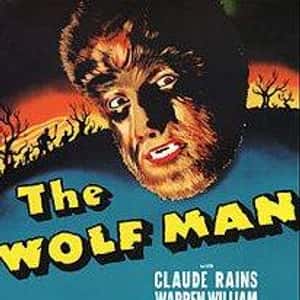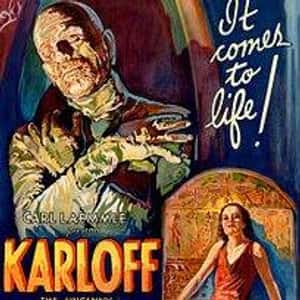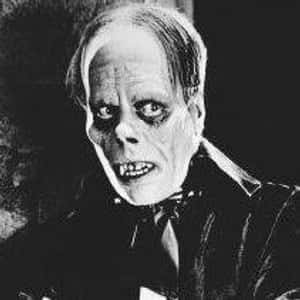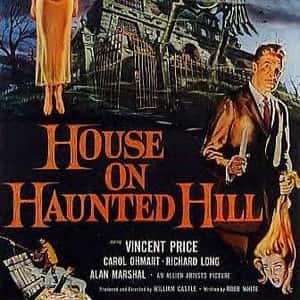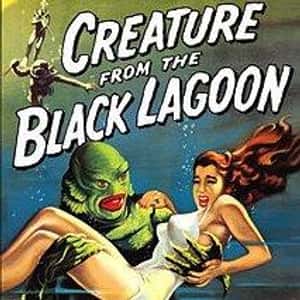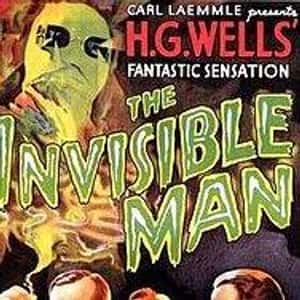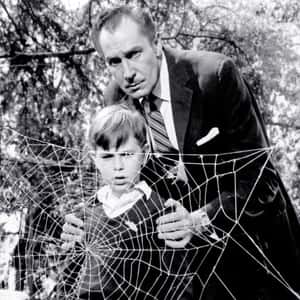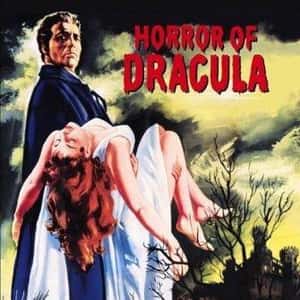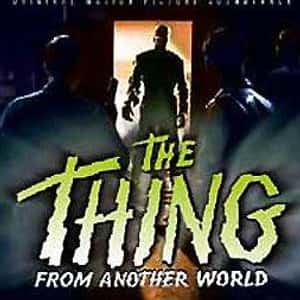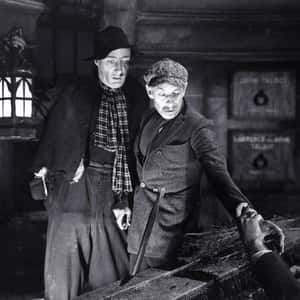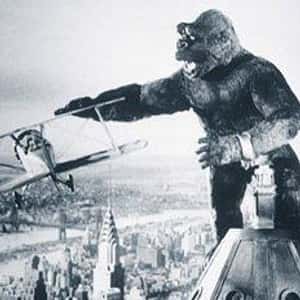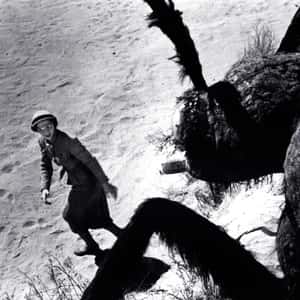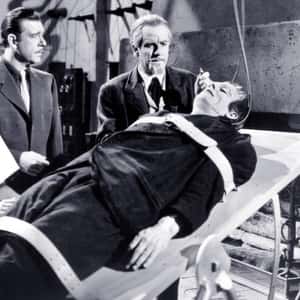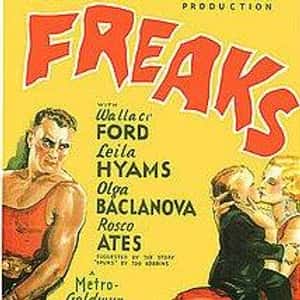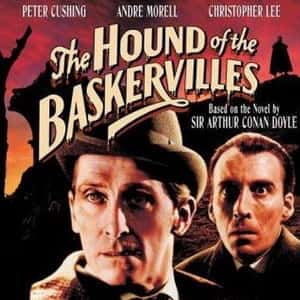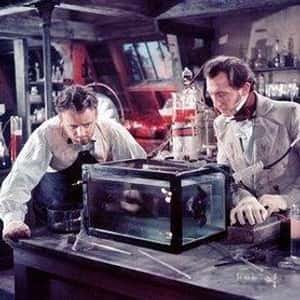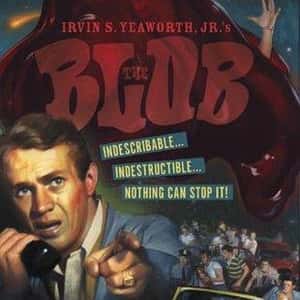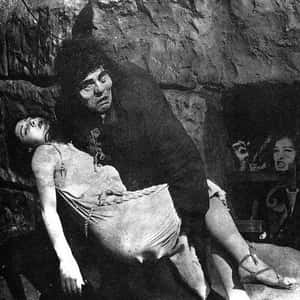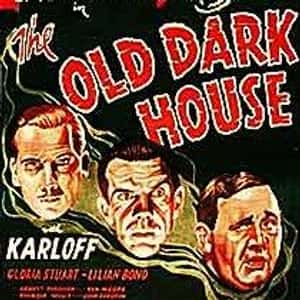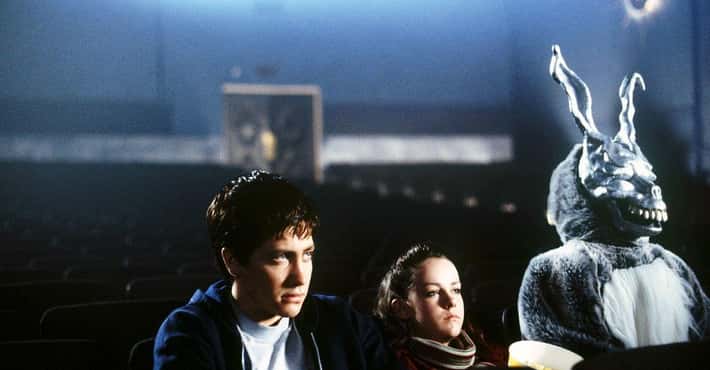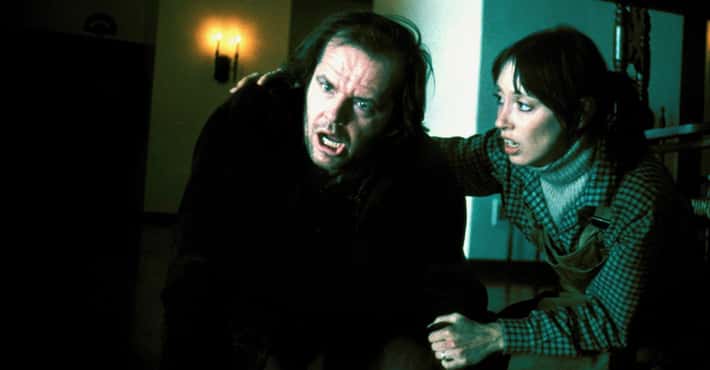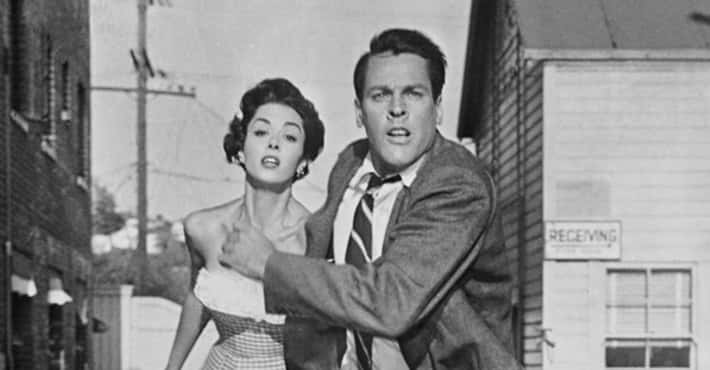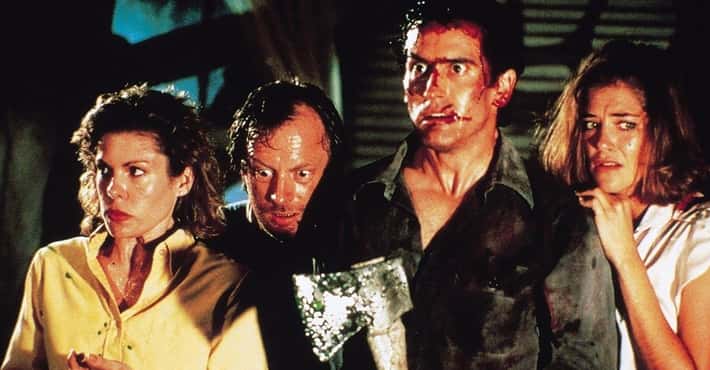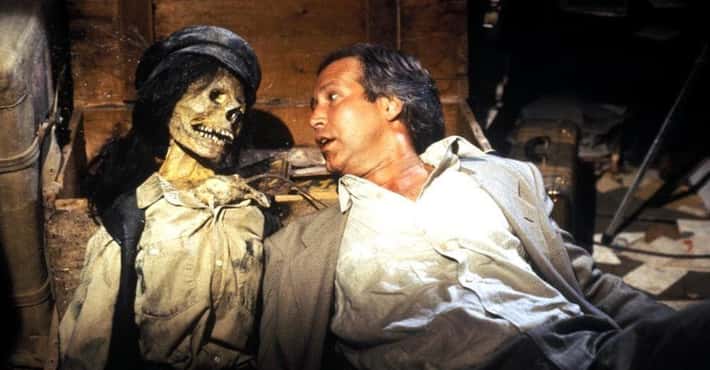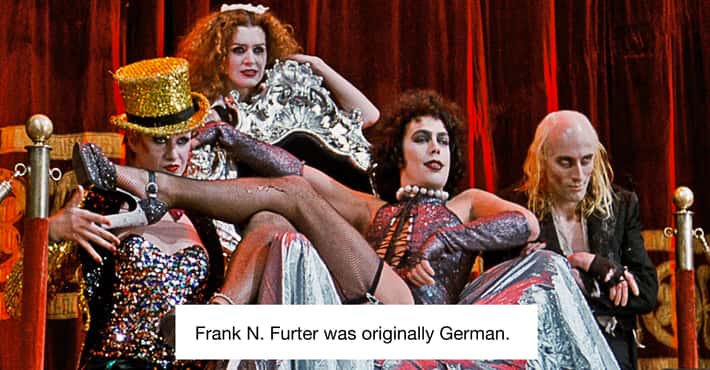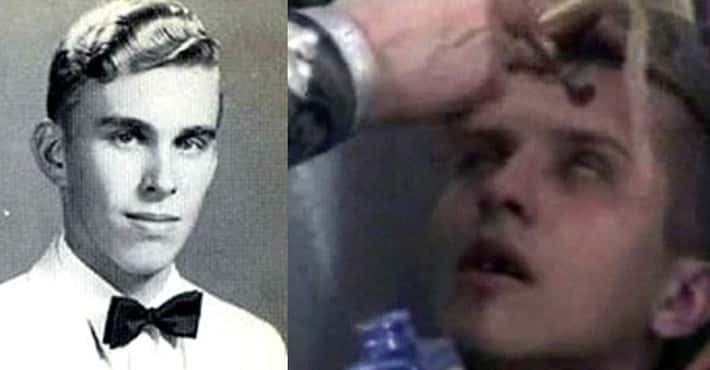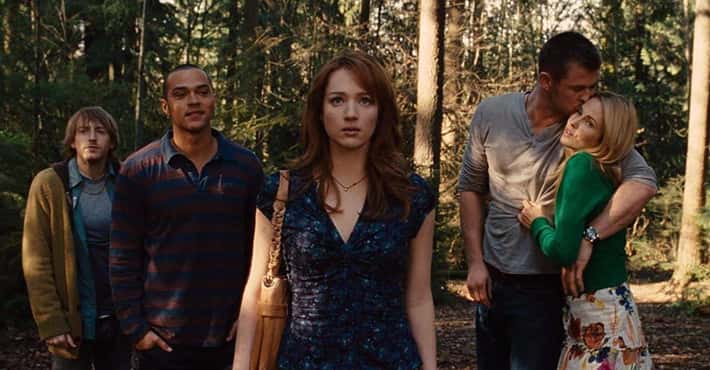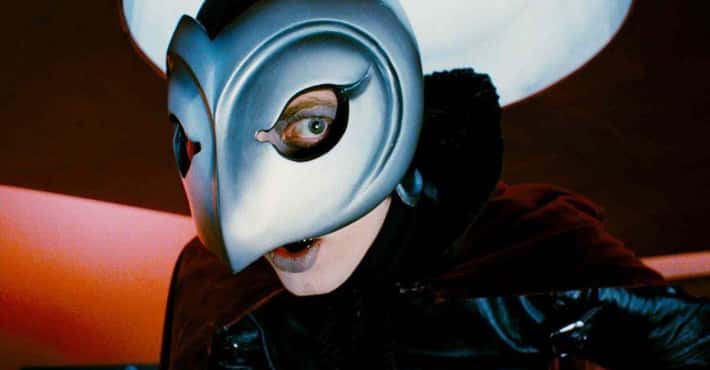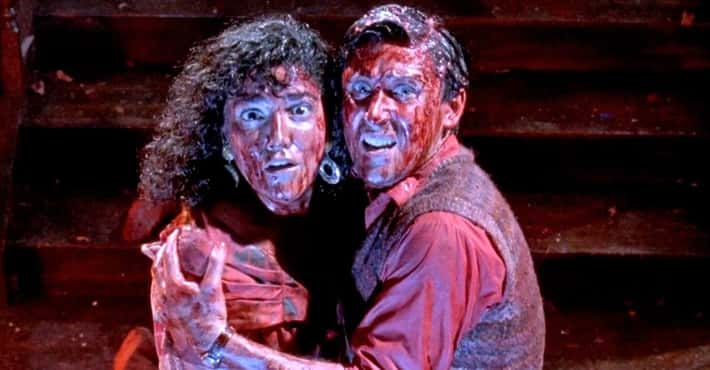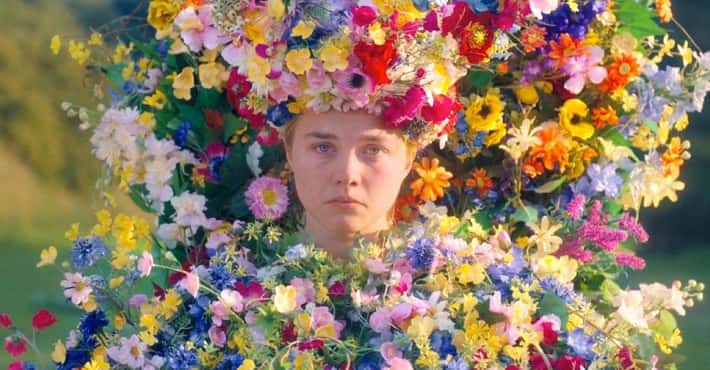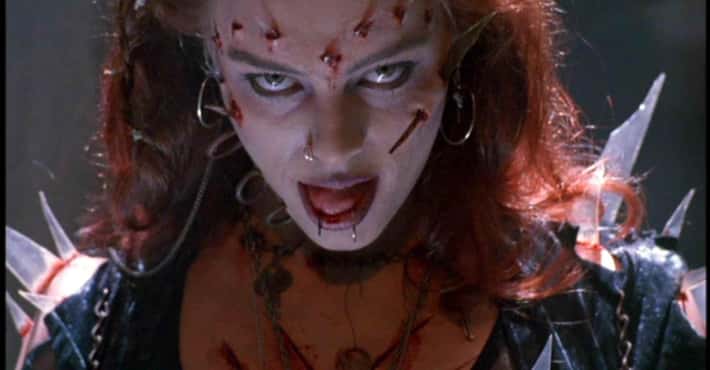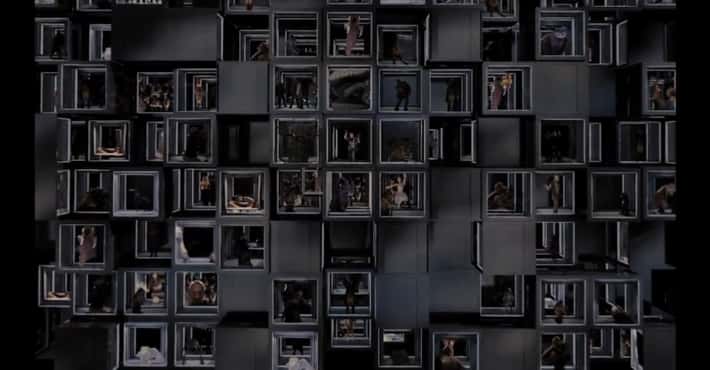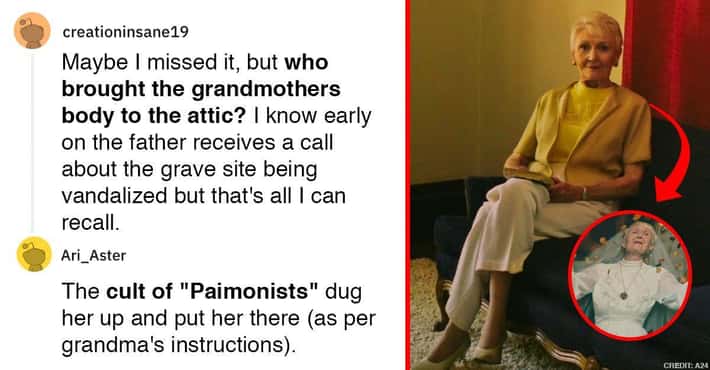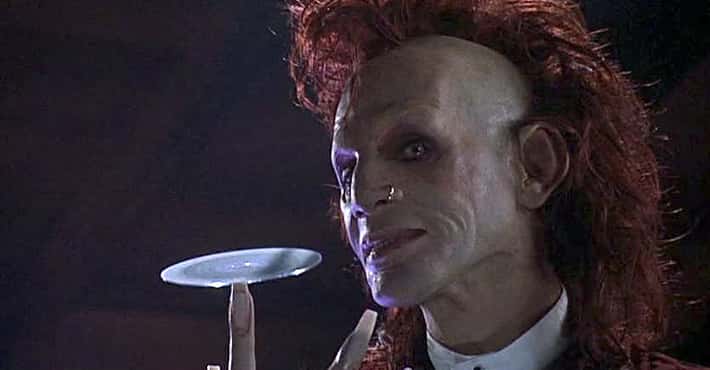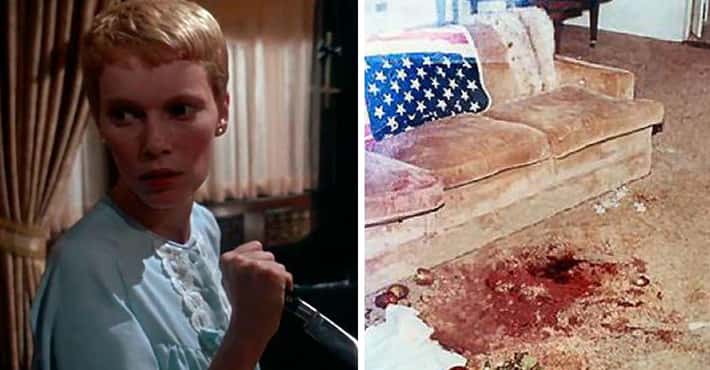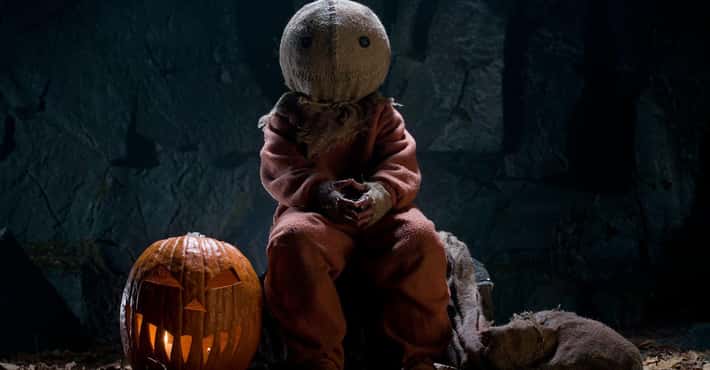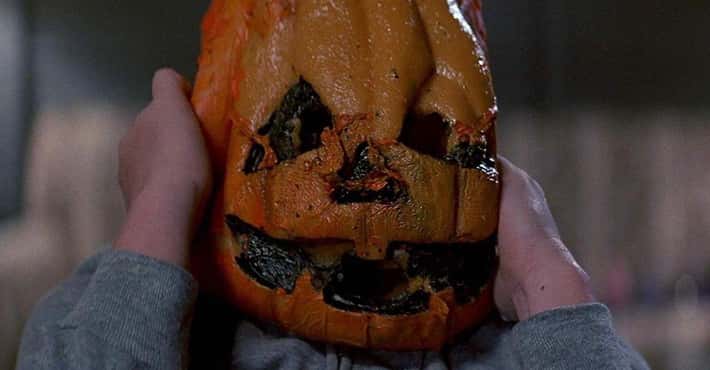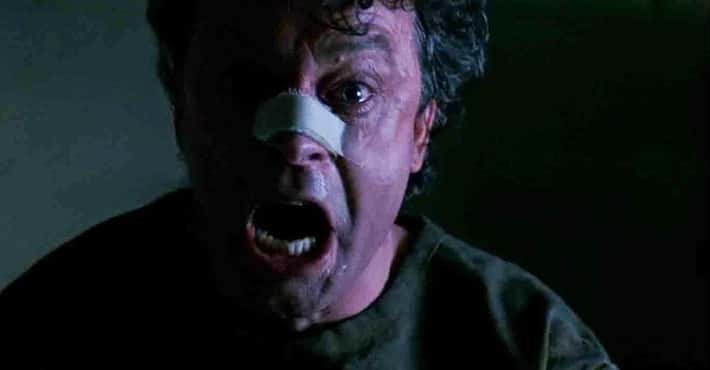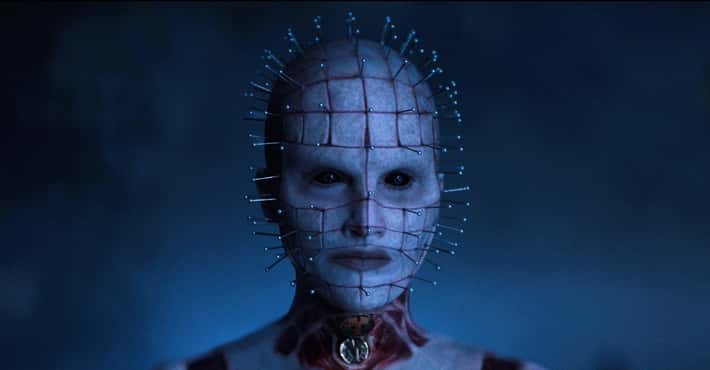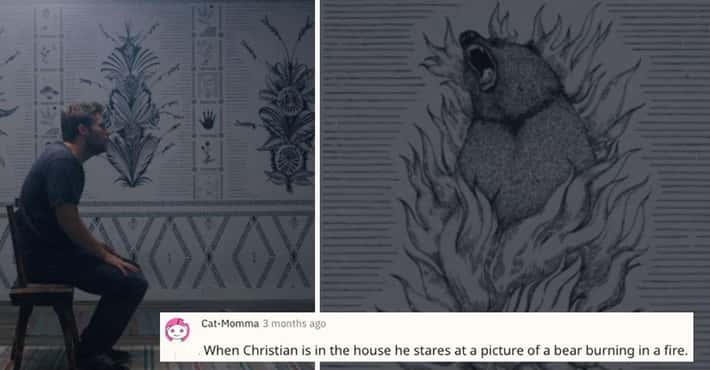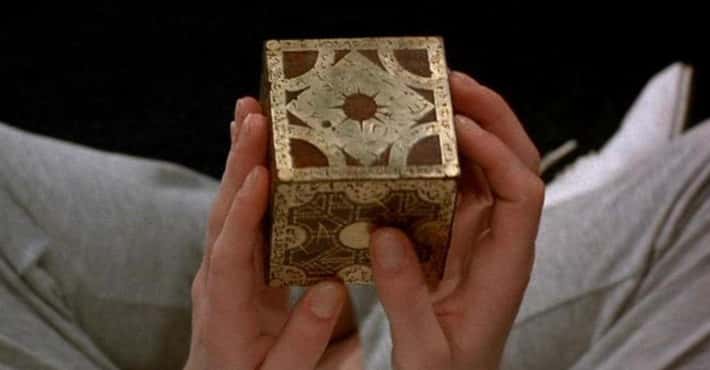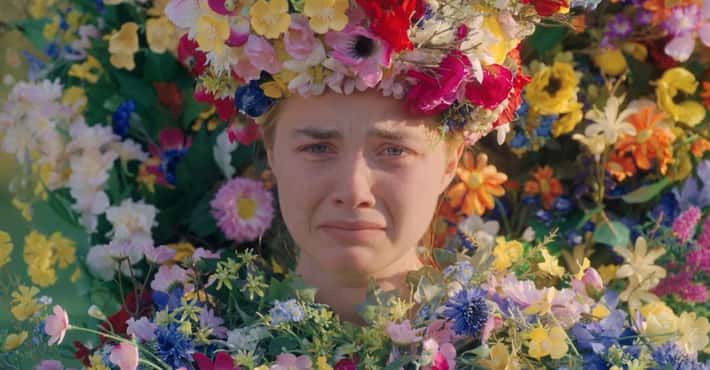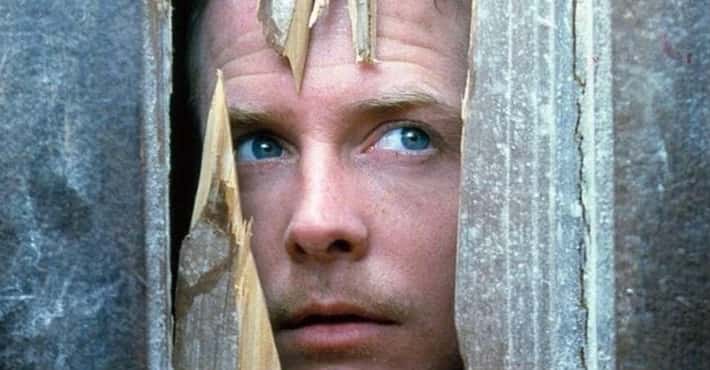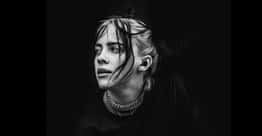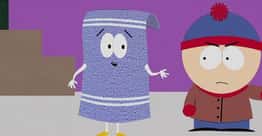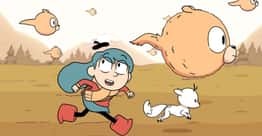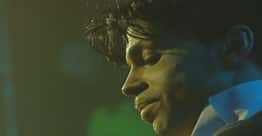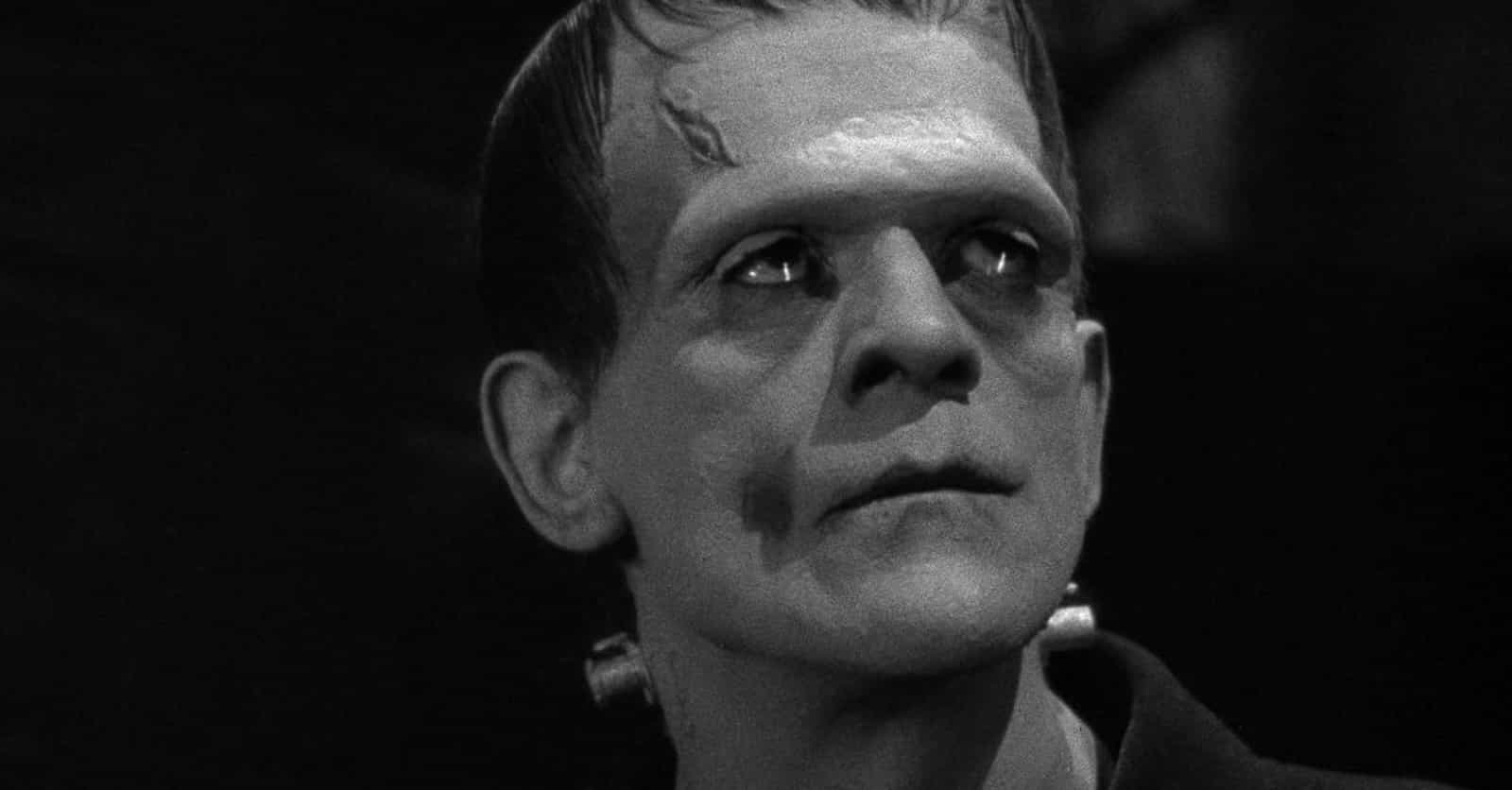
The Best Old Horror Movies Of All Time
- Carl Laemmle
A progenitor of the classic horror genre, Frankenstein (1931) masterfully employs the themes of science run amok and the perils of playing God. Based on Mary Shelley's Gothic novel, the film introduces us to Dr. Henry Frankenstein as he ambitiously attempts to create life from the dead, ultimately resulting in the iconic and tragic character of the Monster. The chilling atmosphere, unforgettable performances, and themes of societal rejection and fear of the unknown solidify Frankenstein as a cornerstone of horror cinema.
More Frankenstein- #84 of 375 onThe Best Movies Based On Books
- #152 of 397 onThe Best Horror Movies Of All Time
- #8 of 91 onThe 90 Best Black And White Movies
- Enrico Dieckmann, Albin Grau
Arguably the first true horror film, Nosferatu (1922) has left a lasting impression on the genre through its haunting visuals and chilling portrayal of vampirism. Directed by the visionary F.W. Murnau, this silent classic employs expressionistic cinematography and makeup effects to convey a sense of unsettling dread that echoes through the annals of horror. Themes of forbidden desire, lurking danger, and the inescapable grasp of death intertwine with Max Schreck's ghastly performance as Count Orlok to create an inimitable cinematic experience.
More Nosferatu- #3 of 86 onThe Best Silent Movies of All Time
- #719 of 769 onThe Most Rewatchable Movies
- #118 of 675 onThe Best Movies Roger Ebert Gave Four Stars
- Tod Browning, Carl Laemmle
As one of the most iconic films in horror history, the 1931 adaptation of Dracula, directed by Tod Browning, epitomizes vampire lore and the timeless terror of the undead. With Bela Lugosi's legendary performance as the titular Count, the film expertly uses its gothic setting, atmospheric storytelling, and dread-inspiring characters to craft a tale that continues to haunt audiences nearly a century later. Themes of seduction, immortality, and human vulnerability elevate Dracula to its rightful place among the pantheon of classic horror cinema.
More Dracula- #77 of 375 onThe Best Movies Based On Books
- #23 of 57 onThe Best Horror Movies Based On True Stories, Ranked
- #135 of 397 onThe Best Horror Movies Of All Time
- Carl Laemmle
Undoubtedly one of the finest horror sequels ever produced, Bride of Frankenstein (1935) expands upon the themes of its predecessor while seamlessly weaving in elements of dark humor and deeper character development. Director James Whale once again explores the consequences of tampering with nature and human life while introducing the titular Bride, an equally tragic and terrifying figure. The film's enduring appeal stems from its evocative expressionist visuals, its compelling exploration of morality and loneliness, and the unforgettable performances of Boris Karloff and Elsa Lanchester.
- #218 of 397 onThe Best Horror Movies Of All Time
- #34 of 118 onThe Best Horror Movie Sequels
- #6 of 15 on15 Horror Movie Villains Whose Bad Acts Were Motivated By Love
- George Waggner
Considered one of the definitive werewolf films, The Wolf Man (1941), from director George Waggner, explores the primal terrors of transformation and loss of control. The heartrending performance of Lon Chaney Jr. as the tormented protagonist Larry Talbot highlights the themes of humanity versus animal instinct and the dangers of dabbling with ancient curses. Supported by evocative cinematography and unforgettable makeup/effects, The Wolf Man stands as a prime example of atmospheric horror storytelling.
More The Wolf Man - Walter Wanger
Paranoia takes center stage in Don Siegel's Invasion of the Body Snatchers (1956), an enduring tale of alien doppelgängers replacing humans. This sci-fi horror masterpiece touches upon themes of conformity, loss of identity, and the erosion of humanity, all delivered through chillingly effective storytelling. Its allegorical undertones and sense of creeping fear have inspired countless imitators, but none can replicate the unique blend of terror and social commentary that make Invasion of the Body Snatchers an unforgettable classic.
- #58 of 178 onThe 150+ Best Movies With Aliens
- #59 of 108 onThe Best Intelligent Horror Movies
- #325 of 397 onThe Best Horror Movies Of All Time
- Carl Laemmle
Unearthing the fears of eternal damnation and ancient curses, The Mummy (1932) is a masterclass in slow-building dread and atmosphere. Directed by Karl Freund and starring the incomparable Boris Karloff as the resurrected Imhotep, the film delves into the terror of tampering with the afterlife and the destructive power of obsession. From its eerie opening scene to its tragic conclusion, The Mummy remains a touchstone of classic horror cinema.
More The Mummy- #124 of 397 onThe Best Horror Movies Of All Time
- #8 of 16 onThe Most Terrifying Figures In Horror With The Lowest Kill Counts
- #45 of 87 onThe Best Halloween Movies For Kids
- Carl Laemmle
One of the earliest and most enduring examples of gothic horror, The Phantom of the Opera (1925), directed by Rupert Julian, adapts Gaston Leroux's novel into an iconic tale of love, obsession, and terror. Lon Chaney's transformative performance as the titular Phantom drove home the themes of romantic fixation and the dark underbelly of artistic expression. The film's striking visuals and evocative set pieces, particularly the iconic unmasking scene, combine with an operatic score to create a haunting and unforgettable horror experience.
- #11 of 86 onThe Best Silent Movies of All Time
- #129 of 375 onThe Best Movies Based On Books
- #199 of 675 onThe Best Movies Roger Ebert Gave Four Stars
- William Castle
A quintessential haunted house tale, House on Haunted Hill (1959) is a testament to the enduring power of director William Castle's gleefully macabre sense of humor. Utilizing the themes of greed, isolation, and supernatural dread, the film boasts a memorable performance by Vincent Price as the eccentric millionaire who invites guests to survive a night in his sinister abode. House on Haunted Hill remains a beloved entry in the horror canon due to its atmospheric tension, diabolical twists, and unshakable sense of eerie fun.
- #22 of 108 onThe Best Intelligent Horror Movies
- #49 of 397 onThe Best Horror Movies Of All Time
- #9 of 16 on16 Times A Supernatural Plot Winds Up Having A Rational Explanation
- William Alland
A pioneering example of monster horror, Creature from the Black Lagoon (1954) explores humanity's deep-seated fears of the unknown lurking just beneath the surface. Directed by Jack Arnold, the film derives its chilling atmosphere from the eponymous Creature's haunting design and the claustrophobic setting of the Amazonian jungle. Themes of scientific discovery gone awry, man versus nature, and the timeless terror of the "other" elevate Creature from the Black Lagoon to the status of a classic horror masterpiece.
- Bryan Foy
A pioneer of 3D horror cinema, House of Wax (1953) embraces themes of obsession, artistic expression, and the macabre fascination with death. Directed by André De Toth and featuring a captivating performance by Vincent Price as the sadistic sculptor, the film combines striking visuals and atmospheric storytelling to create a sinister world of waxen nightmares. Its effective use of suspense, mystery, and gruesome reveals has solidified House of Wax as a fundamental entry in the horror genre.
More House of Wax- #117 of 397 onThe Best Horror Movies Of All Time
- #54 of 114 onThe Greatest Movie Remakes Of All Time
- #4 of 22 onThe Most Important 'Firsts' In Film History
- Carl Laemmle, Jr.
Infusing psychological terror with dark humor, James Whale's adaptation of H.G. Wells' The Invisible Man (1933) explores themes of power, corruption, and isolation. Featuring groundbreaking special effects for its time, the film tells the story of Dr. Jack Griffin, whose descent into madness is fueled by his newfound invisibility. Claude Rains' mesmerizing performance, coupled with Whale's masterful direction and keen exploration of the darker corners of the human psyche, makes The Invisible Man a timeless horror classic.
More The Invisible Man- #221 of 375 onThe Best Movies Based On Books
- #302 of 397 onThe Best Horror Movies Of All Time
- #9 of 60 onThe Best Horror Movies About Evil Experiments
- Kurt Neumann, Robert L. Lippert
Innovative and disturbing, The Fly (1958) is a classic horror film that delves into themes of scientific hubris, transformation, and existential fear. Directed by Kurt Neumann and featuring a chilling performance by Vincent Price, the film showcases groundbreaking creature effects and a palpable sense of dread as it unfolds its tragic tale of a scientist who inadvertently merges his body with a housefly. With its unflinching exploration of the consequences of unchecked ambition, The Fly remains a classic of both the horror and sci-fi genres.
More The Fly- #141 of 397 onThe Best Horror Movies Of All Time
- #13 of 51 onThe Greatest Classic Sci-Fi Movies
- #64 of 211 onThe Scariest Movies Of All Time
- Anthony Hinds
Horror of Dracula is a chilling and timeless classic that expertly captures the essence of old horror movies, utilizing spine-tingling tropes that are still gripping today. Directed by Terence Fisher and released in 1958, this Hammer Films production rejuvenated the vampire genre with its rich atmosphere, engrossing plot, and Christopher Lee's unforgettable portrayal of Count Dracula. The film masterfully upholds Gothic traditions by depicting a haunted castle, lurking shadows, and brooding intensity to create an unsettling environment that cleverly manipulates the viewers' imaginations. Horror of Dracula serves as a superb example of how old horror films captivated audiences with evocative storytelling and subtle suspense, rather than relying on gratuitous gore or shock value.
More Dracula - Howard Hawks
A chilling precursor to the paranoia-fueled horror films of the 1950s, The Thing from Another World (1951) taps into the fear of extraterrestrial invasion and scientific overreach. Directed by Christian Nyby (with uncredited input from Howard Hawks), the film adroitly balances character-driven tension with a palpable sense of isolation and dread. Its menacing, otherworldly antagonist and efficient storytelling have contributed to its lasting impact on the horror and sci-fi genres.
- #93 of 178 onThe 150+ Best Movies With Aliens
- #288 of 397 onThe Best Horror Movies Of All Time
- #24 of 42 onThe Best Snowy Thriller Movies, Ranked
- Rouben Mamoulian
Delving into the duality of human nature and the battle between good and evil, Dr. Jekyll and Mr. Hyde (1931) delivers a chilling exploration of psychological horror. Directed by Rouben Mamoulian, the film features a harrowing performance by Fredric March as the doomed doctor who unleashes his monstrous alter ego upon the world. Its innovative use of camera techniques, expressionistic visuals, and unflinching exploration of the human psyche make Dr. Jekyll and Mr. Hyde an enduring classic in horror cinema.
- #223 of 375 onThe Best Movies Based On Books
- #6 of 42 onThe Best Horror Movies About Evil Doctors And Surgeons
- #21 of 73 onThe Best Movies About Split Personalities
- George Waggner
A landmark crossover event in horror cinema, Frankenstein Meets the Wolf Man (1943) expertly merges the themes and mythology of its iconic monster franchises. Directed by Roy William Neill, the film weaves together the tragic stories of the Wolf Man and Frankenstein's Monster while skillfully balancing elements of horror, suspense, and pathos. This ambitious and atmospheric confrontation between two titans of terror stands as a testament to the enduring appeal of these classic characters and their tales of dark, primal fear.
- Merian C. Cooper, Ernest B. Schoedsack
A landmark of both horror and adventure filmmaking, King Kong (1933) captures the imagination with its groundbreaking special effects, iconic monster, and themes of man versus nature. Directed by Merian C. Cooper and Ernest B. Schoedsack, the film balances its thrilling set pieces with a poignant exploration of the titular giant ape's longing for companionship and struggle against societal fears. With its enduring impact on pop culture and the horror genre, King Kong remains a classic that continues to thrill and inspire.
More King Kong- #83 of 675 onThe Best Movies Roger Ebert Gave Four Stars
- #154 of 397 onThe Best Horror Movies Of All Time
- #18 of 71 onThe Scariest Animal Horror Movies Ever Made
- David Weisbart
A quintessential example of the 1950s giant monster craze, Them! (1954) skillfully taps into the collective fear of nuclear fallout and its terrifying repercussions. Directed by Gordon Douglas, the film uses the giant, mutated ants as a potent symbol of mankind's hubris and the potential consequences of scientific advancement run amok. With its thrilling set pieces, sense of creeping dread, and provocative themes, Them! holds a unique place in the pantheon of classic horror cinema.
More Them!- #115 of 178 onThe 150+ Best Movies With Aliens
- #231 of 397 onThe Best Horror Movies Of All Time
- #36 of 71 onThe Scariest Animal Horror Movies Ever Made
- Paul Malvern
An ambitious and atmospheric monster mash, House of Frankenstein (1944) brings together iconic horror figures such as Dracula, the Wolf Man, and Frankenstein's Monster in a thrilling tale of revenge and redemption. Directed by Erle C. Kenton, the film skillfully weaves its various plotlines and thematic elements into a cohesive narrative that exemplifies the best of Universal's classic monster movies. Its sense of macabre fun, memorable performances, and evocative atmosphere make House of Frankenstein a cherished entry in the horror genre.
- #11 of 20 on20 Universal Monster Movies, Ranked By Iconic Thrills
- #52 of 80 onList of 75+ Famous Monster Movies, Ranked
- #5 of 50 onThe 50 Best Horror Movies Of The '40s, Ranked
- Tod Browning, Dwain Esper, Hildegarde Stadie
Unsettling and deeply empathetic, Tod Browning's Freaks (1932) is a landmark of horror cinema that explores the darker side of human nature and the concept of the "other." Set within the world of a traveling sideshow, the film eschews traditional horror tropes in favor of presenting the true grotesqueries of human behavior. With its unforgettable cast of real-life sideshow performers, haunting imagery, and unflinching examination of societal cruelty, Freaks remains a powerful and influential piece of horror history.
More Freaks- #80 of 125 onThe 100+ Grossest Movies Ever
- #254 of 397 onThe Best Horror Movies Of All Time
- #91 of 98 onThe Best Movies with Only One Word for a Title
- Rowland V. Lee
A worthy successor to its iconic predecessors, Son of Frankenstein (1939) delves deeper into the themes of legacy, ambition, and the psychological ramifications of scientific meddling. Directed by Rowland V. Lee, the film introduces us to the titular protagonist as he grapples with the weight of his father's notorious experiments and their monstrous consequences. With its Gothic atmosphere, strong performances from Boris Karloff and Bela Lugosi, and thoughtful exploration of its central themes, Son of Frankenstein stands as a vital chapter in the saga of one of horror's most enduring characters.
More Son of Frankenstein- #104 of 164 onThe Best Movie Sequels Ever Made
- #10 of 20 on20 Universal Monster Movies, Ranked By Iconic Thrills
- #31 of 80 onList of 75+ Famous Monster Movies, Ranked
- Anthony Hinds
Unleashing the iconic detective Sherlock Holmes onto the moors of Dartmoor, The Hound of the Baskervilles (1959) skillfully melds horror and mystery in a tale of supernatural dread and human greed. Directed by Terence Fisher, the film benefits from the compelling chemistry between Peter Cushing's Holmes and André Morell's Dr. Watson as they investigate the ominous legend surrounding the titular hound. Its atmospheric visuals, chilling score, and intriguing themes distinguish The Hound of the Baskervilles as a standout entry in both the horror and detective genres.
- Anthony Hinds
Breathing new life into Mary Shelley's iconic tale, The Curse of Frankenstein (1957) reimagines the classic story with a fresh, vibrant aesthetic and a newfound emphasis on psychological horror. Directed by Terence Fisher and featuring standout performances from Peter Cushing as Victor Frankenstein and Christopher Lee as the Monster, the film ambitiously explores the darker corners of ambition, desire, and obsession. With its lush visuals, innovative storytelling, and provocative themes, The Curse of Frankenstein marks a turning point in the history of horror cinema.
- #4 of 13 on13 Essential Hammer Horror Movies For Fans Of Fright
- #94 of 146 onThe Best Supernatural Horror Movies, Ranked
- #24 of 57 onThe 55+ Best Gothic Horror Movies, Ranked
- Debra Hill
A chilling exploration of wartime trauma and supernatural revenge, The Black Cat (1934) stands as one of Universal's most atmospheric and intriguing horror offerings. Directed by Edgar G. Ulmer, the film benefits from the dynamic chemistry between horror icons Boris Karloff and Bela Lugosi as they navigate a tale of obsession, murder, and the haunting specter of the past. With its moody visuals, inventive plot, and evocative exploration of human cruelty, The Black Cat remains an underrated gem of horror cinema.
- Jack H. Harris
An enduring parable of Cold War angst and the fear of unstoppable forces, The Blob (1958) is a prime example of sci-fi horror done right. Directed by Irvin Yeaworth, the film imbues its titular monster with a palpable sense of dread as it engulfs and assimilates everything in its path. Its effective use of suspense, isolation, and creeping terror combines with a youth-centric perspective to create a film that resonates with audiences to this day, solidifying The Blob as a classic of the genre.
More The Blob- #81 of 178 onThe 150+ Best Movies With Aliens
- #129 of 397 onThe Best Horror Movies Of All Time
- #253 of 278 on'Old' Movies Every Young Person Needs To Watch In Their Lifetime
- Carl Laemmle, Irving Thalberg
A landmark in the evolution of horror, The Hunchback of Notre Dame (1923) explores themes of obsession, societal cruelty, and the grotesque with unflinching intensity. Directed by Wallace Worsley and featuring a transformative performance by Lon Chaney as the titular hunchback, the film remains as heart-wrenching and thought-provoking today as it was upon its release. Its striking visuals, powerful storytelling, and vivid exploration of human nature make The Hunchback of Notre Dame an enduring classic of the horror genre.
- #27 of 86 onThe Best Silent Movies of All Time
- #111 of 375 onThe Best Movies Based On Books
- #8 of 51 onThe 50+ Best Movies In Public Domain
- Stanley Bergerman
A precursor to the werewolf films that would follow, Werewolf of London (1935) introduces audiences to the tragic figure of Dr. Glendon, a botanist who becomes afflicted with lycanthropy. Directed by Stuart Walker, the film skillfully delves into themes of uncontrollable urges, the duality of man, and the primal fears that lurk within us all. The film's atmospheric cinematography, special effects, and thoughtful exploration of its characters' internal struggles make Werewolf of London an essential entry in the annals of horror cinema.
- Erich Pommer, Rudolf Meinert
Often considered the quintessential example of German Expressionism, The Cabinet of Dr. Caligari (1920) is a pioneering work in both horror and art cinema. Directed by Robert Wiene, the film uses its unsettling atmosphere, unique visual style, and twisted narrative to explore themes of insanity, control, and the blurred lines between reality and illusion. With its lasting impact on the horror genre and cinema as a whole, The Cabinet of Dr. Caligari remains an essential and unforgettable entry in the canon of classic film.
- #214 of 252 onThe 200+ Best Psychological Thrillers Of All Time
- #447 of 675 onThe Best Movies Roger Ebert Gave Four Stars
- #336 of 397 onThe Best Horror Movies Of All Time
- Carl Laemmle
A masterclass in atmospheric horror, The Old Dark House (1932) uses its claustrophobic setting and eccentric characters to explore themes of isolation, paranoia, and the dark secrets that lie behind every door. Directed by James Whale, the film creates a palpable sense of dread as its ensemble cast finds themselves trapped within the titular abode, wherein the horrors of human nature take center stage. Combining dark humor, suspenseful storytelling, and unique character development, The Old Dark House is a cornerstone of classic horror cinema.
More The Old Dark House- #368 of 397 onThe Best Horror Movies Of All Time
- #14 of 18 onUnderrated Horror Movies That Flopped At The Box Office
- #10 of 17 onThe Scariest Horror Movies About Being Alone In Isolation



